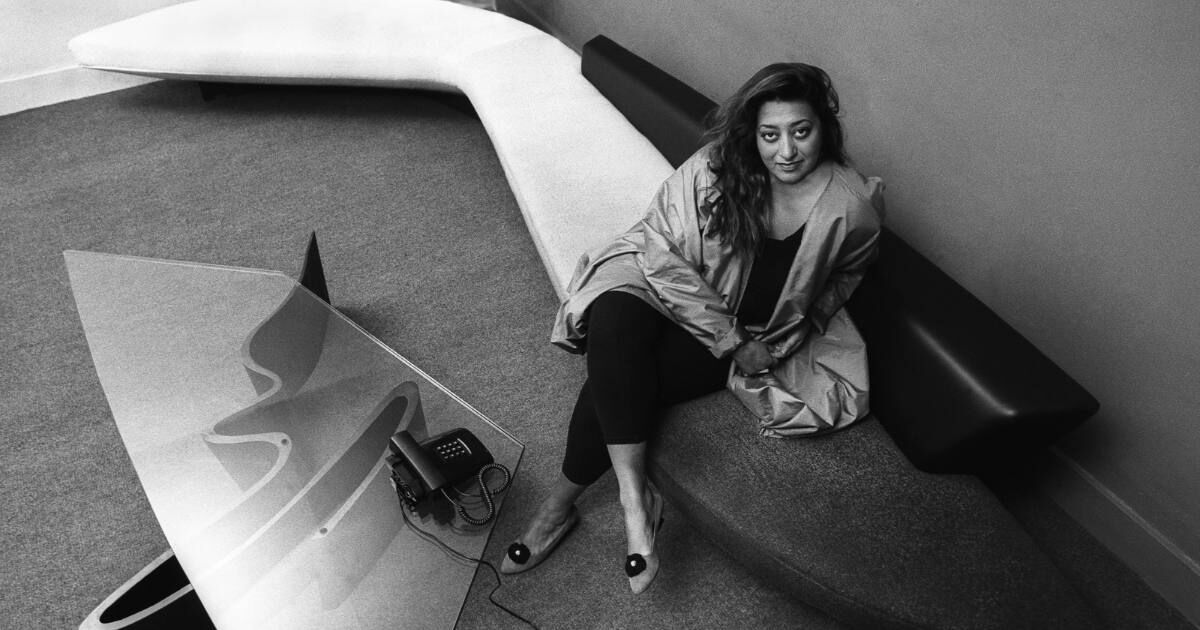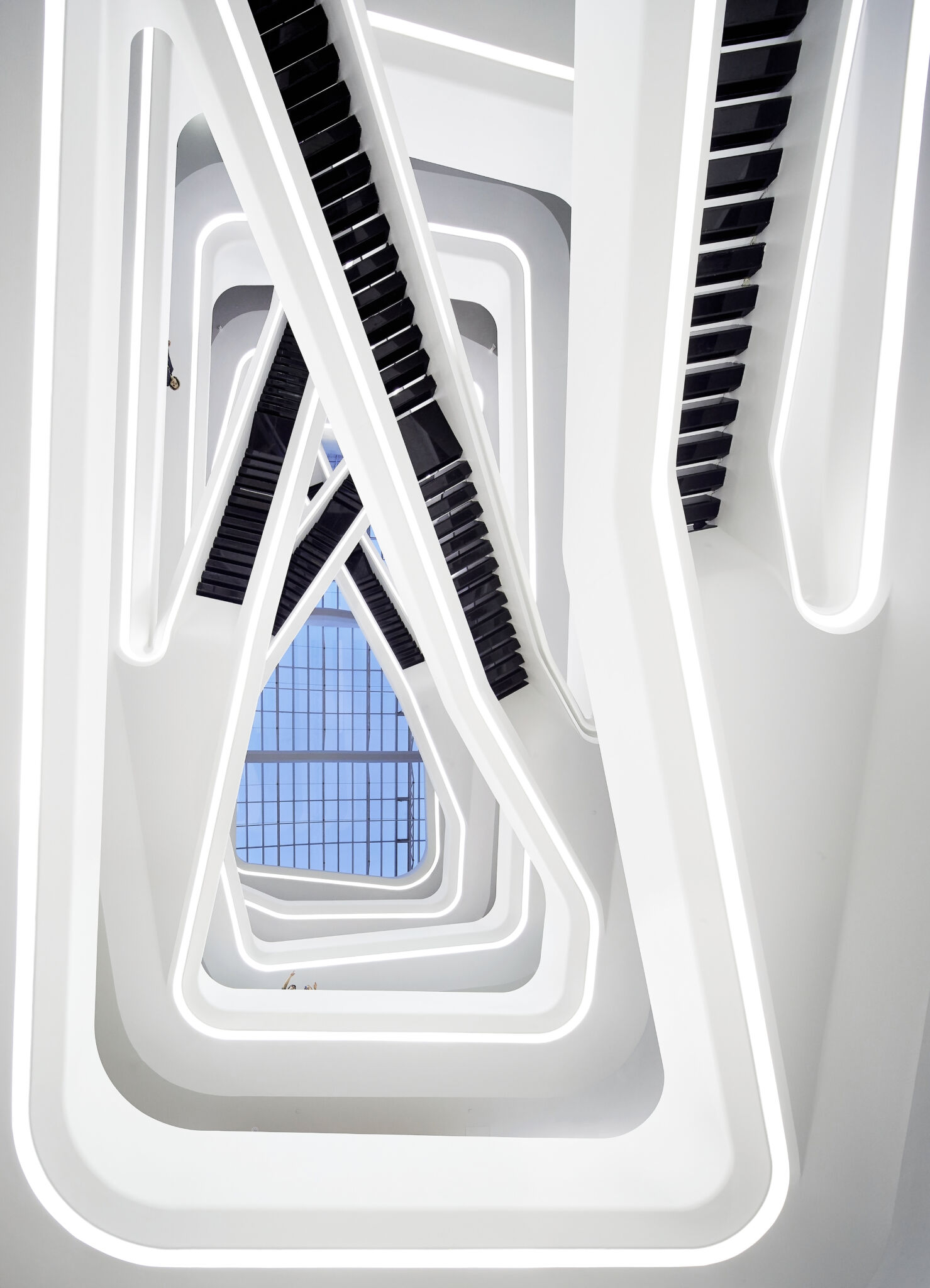Futuristic Visions of Zaha Hadid
ONE OF THE LEADING FIGURES IN CONTEMPORARY GLOBAL ARCHITECTURE

For much of her career, Zaha Hadid's work remained in the realm of "paper architecture," known only among critics and colleagues. Yet today, it’s hard to imagine modern architecture without her presence.
About her life
In 1950, in the city of Baghdad, a girl was born who would go on to leave a monumental mark on the history of architecture. Growing up in a bourgeois family led by a liberal, democratic father with socialist leanings, young Zaha Hadid was raised in a home of modern principles and received an excellent education at the American University of Beirut, where she studied mathematics. But her talent for creating beauty, perhaps inherited from her mother, an artist, was equally prominent. She spent her childhood in one of Baghdad's first modernist houses, which sparked her interest in architecture. Zaha dreamed of leaving her mark on history, of becoming an architect who would shape the future. In 1972, she moved to London to study at the Architectural Association School, where her talent caught the eye of her professor, the famous Dutch architect Rem Koolhaas. Koolhaas introduced her to deconstructivism, where she found her voice, beginning a career in this bold architectural style. He described her as "a planet on her own orbit," which aptly captured her distinctive style.

Фото: Zaha Hadid press center
By 1980, Zaha Hadid founded her own architectural firm, Zaha Hadid Architects, continuously dreaming up daring and unconventional projects that gained her victories in major architectural competitions. Though acclaimed by industry professionals, most of her designs remained only on paper as clients were hesitant to embrace her bold visions in architecture.

Photo: Zaha Hadid press center
«My personal life is my career»
Changes came for Zaha in 1993 with her first completed project, a fire station for the furniture company Vitra. This milestone marked the start of her ascent in the world of architecture.
Not much is known about her personal life. Zaha was one of those women "married to her career," and although she was saddened by not having children, she did not regret her choice. Zaha did not consider herself a feminist, though she was proud to be a role model in the male-dominated design world.

Photo: Zaha Hadid press center
«I wouldn’t say I sacrificed family for my career. Of course, work influenced my personal life, but it wasn’t something I intended to sacrifice. It just happened that way.»
About her work
For two-thirds of her career, Zaha Hadid worked on projects that, despite gaining critical acclaim, often went unbuilt or were shelved entirely. Many of her designs were celebrated, but they remained unrealized as circumstances seemed to work against her. Her first major win came in a competition held in Hong Kong in 1982, where her design for a sports club at the peak of a mountain defied typical gravitational rules — a hallmark of her bold style. However, due to political uncertainty in the region, the project was canceled. This setback was followed by another canceled project, the Cardiff Bay Opera House in Wales.

Photo: Zaha Hadid press center
Interest in Zaha’s work surged with Frank Gehry’s Guggenheim Museum in Bilbao (1997), and her ideas took off after her involvement in the Rosenthal Center for Contemporary Art in Cincinnati, USA (2003), hailed as the most important new building in the U.S. since the Cold War. In the mid-2000s, she moved away from deconstructivism, embracing fluid forms that relied on complex computer-generated designs, bringing a sense of harmony between parts. Her designs often evoke an Eastern influence, as though she uses architecture to trace Arabic calligraphy. Her most notable works include the MAXXI National Museum of XXI Century Arts in Rome (2010), the London Aquatics Centre for the 2012 Olympics, the Heydar Aliyev Center in Baku (2012), and the Guangzhou Opera House.

Photo: Zaha Hadid press center
«I will never design prisons, even if they were the most luxurious prisons in the world. »
As an architect, Hadid sought to break traditional rules and push beyond conventional boundaries, infusing her buildings with a dynamic energy. She often distorted perspectives to create unexpected angles and curves, challenging the usual geometry of architecture. Her projects combined modern architectural forms with innovative technologies, making a bold and unique contribution to the field. Many of her buildings resemble futuristic vessels or intricate works of art as if they were plucked from the pages of a visionary artist's sketchbook.

Photo: Zaha Hadid press center
Hadid also excelled in interior design, creating striking exhibition spaces, paintings, installations, and theater sets. She collaborated with numerous luxury brands, developing limited-edition furniture collections, jewelry, and home decor items. Each project, regardless of its scale, bore her unmistakable touch, showcasing her vision and personal style. Today, her smaller works can be found in major museum collections, including MoMA and the German Architecture Museum (DAM) in Frankfurt. Alongside her architectural work, Hadid taught and lectured globally, inspiring audiences and students alike. Collaborating with prestigious brands, she launched her own "Zaha Hadid" label, known for high-end design items and decorative accessories that draw inspiration from her renowned architectural legacy. Every piece she designed, whether jewelry, furniture or an entire building, embodied her commitment to innovation, pushing the limits of design and materials.

Photo: Zaha Hadid press center
Ups and downs
Zaha Hadid’s architectural style was so distinct and futuristic that some critics referred to her as a "mass architect," suggesting her work was almost too unconventional for the public to embrace. Many of her buildings looked so similar in their bold, space-age aesthetics that people sometimes struggled to differentiate them, leading to accusations of self-repetition. Additionally, the 2008 global recession brought a shift in architectural priorities toward efficiency and cost-effectiveness. Hadid’s projects, on the other hand, were anything but conservative, often seen as expensive and spatially extravagant. Critics argued that her designs were an inefficient use of space, but Hadid believed that her bold, unconventional approach would ultimately be seen as forward-thinking, paving the way for a new generation of architecture.
She was the first woman and the first architect from a developing country to win the prestigious Pritzker Architecture Prize in 2004, considered the "Nobel Prize of Architecture."
At the time, she had only five completed projects, yet her impact was undeniable. Ten years later, Zaha Hadid Architects employed over 500 architects, producing up to five new, extraordinary buildings every year. Today, her firm is booked with projects for years to come, shaping the architectural landscape worldwide.
«I don’t believe people can be taught architecture; they can only be inspired. »
Zaha Hadid’s monumental contributions to architecture and design have been recognized by some of the world’s most prestigious organizations. Forbes included her in its list of "World’s Most Powerful Women," and the Japan Art Association awarded her the "Praemium Imperiale." She received the Stirling Prize twice, and in 2012, she was appointed Dame Commander of the Order of the British Empire by Queen Elizabeth II.
Over 30 years, Hadid’s pioneering vision set the direction for 21st-century architecture, captivating the imagination of the entire planet. Her anti-gravitational projects may seem unreal, yet Hadid proved to the world that the impossible is, indeed, possible.


